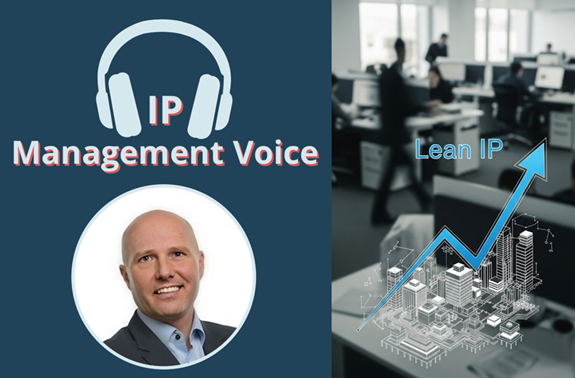The intangible economy 🎯 IP Management Pulse #43
Many IP experts in the IP community at I3PM, the HTB-EPO initiative, and IP offices and institutions in national and regional innovation systems have asked Prof. Dr. Alexander Wurzer: “Where can you be sure not to miss any important IP management content?” In fact, you have to follow a number of interesting feeds to really keep up with the global developments around IP management. To make this easier he decided to offer his own personal newsletter for IP management. Here, you can find the latest issues in the archive and also subscribe. A fresh read with all important IP Management content will be sent to the subscribers every second Thursday at 7:00 (CET), so that they can start the day informed.
The next Newsletter will cover the following topics:
The intangible economy
A recent report by WIPO reveals a striking fact: since 2008, investment in intangible assets — think software, patents, data infrastructure, brand development, R&D, and organizational know-how — has grown over three times faster than investment in tangible assets like buildings or machinery.
👉️ To the LinkedIn post
Trademarks and market entry strategies
When bringing new products or services to the market, an early trademark protection can save you from trouble with trademark squatters. This best practice could be observed at the latest album launch by Taylor Swift, as described in the post.
👉️ To the LinkedIn post by Allison Mages
The role of AI for IP management practices
A cornucopia of AI-based IP management tools is emerging in the market and promising to streamline IP processes and increase IP value. More about the opportunities of AI for IP experts can be read in the post.
👉️ To the LinkedIn post by Alexander Weir
Generating valuable patents
Patents are not valueable per se, but need to be generated for a specific business purpose, e.g. to support a business model. How to generate valueable patents is described in the post.
👉️ To the LinkedIn post by Mike Blake
Trade secrets in non-technical industries
Trade secret protection becomes increasingly important for businesses. But not only technology companies are using it to protect their innovations. Especially, commercial information is protected in non-technical sectors, as the post explains.
👉️ To the LinkedIn post by Shalini Menezes
Whom to follow
Sean Fielding is a member of the ASTP professional development committee and former director at the University of Exeter. On his LinkedIn feed he explores the various aspects and trends of university knowledge exchange and discusses how to support the translation of academic research into business success with the help of external partners.
Damian Porcari is an Intellectual Property advisor and former officer and director at various boards with a long track record as mentor for startups and innovators. On LinkedIn, he shares insights into current developments in US innovation policy and at the USPTO, which are relevant for founders and entrepreneurs.
New on the Resource Hub
Digital Marketing: LinkedIn About Tuner
Turn your expertise into a clear, confident LinkedIn About section — tailored to your positioning as an IP expert.
Digital Marketing: Online Marketing Strategy Configurator
The Online Marketing Strategy Configurator for IP Experts is a smart, self-paced online tool based on ten focused questions. The configurator helps you develop a tailored marketing framework that aligns your specialized IP expertise with your target audience and communication channels – so you can turn your expertise into a visible, credible online presence.
Practical steps to present your expertise: choosing your formats and finding your rhythm
Many IP experts I work with already have a strong professional profile, but they struggle with the “how” of visibility. Should I write short posts or longer articles? Do I need to be on video? How often should I publish? Where do the ideas come from? Without answers to these questions, even the clearest message often remains stuck in draft mode.
One IP attorney I advised began with a single LinkedIn post per month. She shared a simple insight she had noticed repeatedly in client discussions. Within a few months, decision-makers and peers started reaching out directly to her. Her visibility grew naturally, not because she overhauled her schedule or created “perfect” content, but because she showed up consistently in a way that reflected her personality and expertise.
Showing up consistently isn’t about perfection or always having a groundbreaking insight. It’s about letting your expertise be seen, piece by piece, in ways that feel natural to you. Small, steady steps create the recognition and trust that truly matter, and they compound over time.
From simulation to the “Digital Loop”: why dSPACE’s IP playbook deserves your attention
When a company that sits quietly in Paderborn ends up embedded in almost every autonomous‑vehicle program on the planet, IP people should lean in. The new dSPACE case study just published by the IP Business Academy is not another glossy success story. Instead, this case is a masterclass on how to weaponize intellectual property while staying relentlessly aligned with business value. Here are a few appetizers before you dive into the full piece.
Lean IP in action: how agile strategy turns patents into business value
In episode #48 of IP Management Voice, the focus is on a concept that redefines the role of intellectual property: Lean IP. Borrowing directly from Lean Management, this approach applies principles like eliminating waste, focusing on value, and enabling agility — now to the world of IP portfolios. Dr. Oliver Baldus explains how this lean methodology reshapes how companies think about patents, trade secrets, and trademarks — not as static legal assets, but as dynamic strategic tools.
IP-based cooperation in the aviation industry
In highly complex industries, such as the aviation industry, companies are often forced to cooperate to develop novel solutions both in the supply chain and with potential competitors. This highly IP-sensitive situation is called coopetition and was described first by Barry Nalebuff and Adam Brandenburger. Their key findings are discussed in this article.
IP in the drone industry: the DJI consumer drone ecosystem
DJI grew from a small Shenzhen startup in 2006 to the global leader in consumer drones by combining technical innovation with a tightly integrated hardware, software, and service ecosystem. Patents protect flight systems and designs, trademarks secure brand value, and trade secrets safeguard manufacturing know-how. Proprietary apps, accessories, and authentication protocols create customer lock-in, making the ecosystem possible, sustainable, and highly profitable while deterring competitors and counterfeits worldwide.







